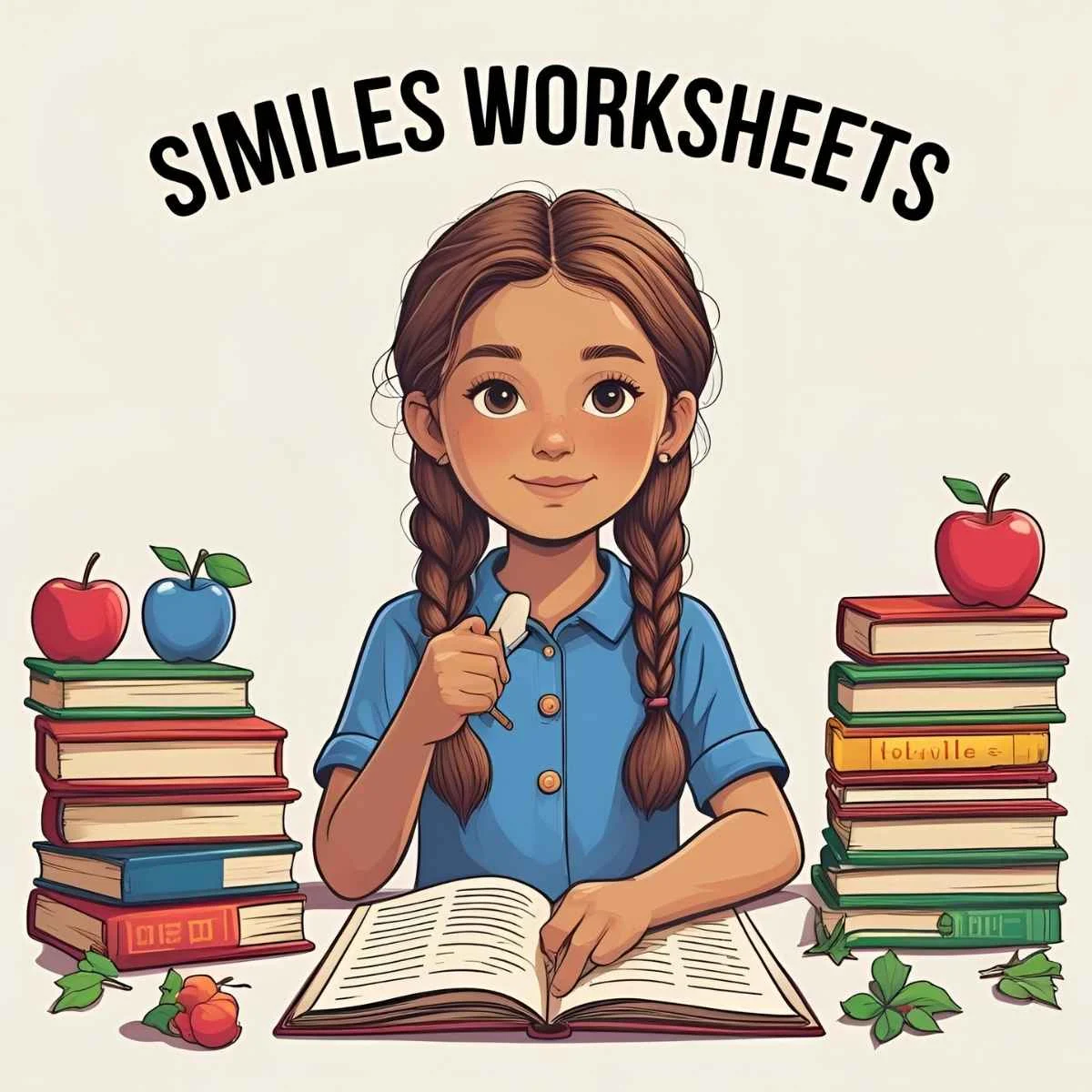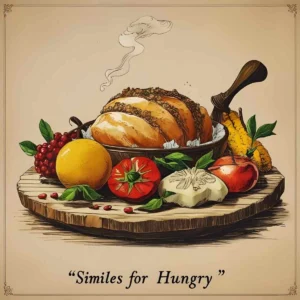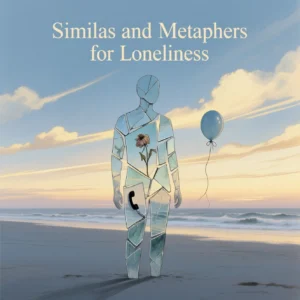Why Similes Brighten Grade 4 Learning 🌟
Similes are like magic wands, transforming simple sentences into vivid pictures by comparing two things using “like” or “as.” For fourth graders, they make writing and reading a delightful adventure, turning “The dog is fast” into “The dog is as fast as a racecar!”
Similes spark creativity, boost vocabulary, and help kids express ideas in fun ways. Whether in class, at home, or during storytelling, simile worksheets engage young minds.
Ready to make learning shine? Let’s explore 25 similes tailored for grade 4 worksheets, sorted by theme, with examples and activities to inspire young writers! 🖌️
Similes for Grade 4 Worksheets: 25 Creative Comparisons
These 25 similes are designed for grade 4 students, capturing their imagination in school, play, or creative moments. Organized into thematic groups, each simile includes a meaning, a classroom or home example, and a worksheet activity to practice it. These are perfect for writing exercises, group work, or fun homework tasks.
Similes for School Smarts 📚
Similes for students excelling in class or tackling schoolwork.
- Brains sparkle like stars, lighting up new ideas.
Meaning: A student’s mind shines with clever thoughts, like stars in the night sky.
Example: In a writing prompt, “Her brain sparkled like a star, solving the math puzzle quickly.”
Worksheet Activity: Write a sentence about your favorite subject using this simile, e.g., “My brain sparkles like a star when I read science.”
Application: Use in a worksheet asking kids to describe their best school moment. - Pencils dance like ballerinas, twirling across the page.
Meaning: Pencils move gracefully as students write, like ballerinas dancing.
Example: In a class story, “His pencil danced like a ballerina, writing a poem about spring.”
Worksheet Activity: Draw a dancing pencil and write a simile sentence about your writing.
Application: Include in a creative writing worksheet to encourage descriptive storytelling. - Students buzz like bees, busy with their books.
Meaning: Kids work eagerly on tasks, like bees buzzing around flowers.
Example: In a reading log, “She buzzed like a bee, finishing her book report early.”
Worksheet Activity: Fill in: “I buzz like a bee when I ___.” Share with a partner.
Application: Use in a reading comprehension worksheet to describe study habits. - Minds race like rockets, zooming through questions.
Meaning: Students think quickly, like rockets blasting off.
Example: In a quiz scene, “His mind raced like a rocket, answering every history question.”
Worksheet Activity: Write a simile about solving a problem, e.g., “My mind races like a rocket in ___.”
Application: Add to a math worksheet to make problem-solving fun. - Ideas bloom like flowers, opening in every lesson.
Meaning: Students’ thoughts grow beautifully, like flowers in spring.
Example: In a journal entry, “Her ideas bloomed like flowers during the science experiment.”
Worksheet Activity: Draw a flower and write a simile about a new idea you had today.
Application: Use in a science worksheet to describe discoveries.
Similes for Playful Moments ⚽
Similes for students during recess, games, or fun activities.
- Kids leap like frogs, hopping through the playground.
Meaning: Students move energetically, like frogs jumping in a pond.
Example: In a recess story, “He leaped like a frog, racing to the slide.”
Worksheet Activity: Write a sentence about your favorite game using this simile, e.g., “I leap like a frog when I ___.”
Application: Include in a narrative writing worksheet about recess adventures. - Laughter bubbles like soda, fizzing in the air.
Meaning: Kids’ giggles burst out, like soda bubbles in a glass.
Example: In a group activity, “Their laughter bubbled like soda during the class game.”
Worksheet Activity: Describe a funny moment with this simile and share it aloud.
Application: Use in a worksheet about friendship or group activities. - Feet scamper like squirrels, darting across the field.
Meaning: Students run quickly and playfully, like squirrels chasing nuts.
Example: In a P.E. story, “Her feet scampered like squirrels in the relay race.”
Worksheet Activity: Write a simile about running, e.g., “My feet scamper like squirrels when I ___.”
Application: Add to a physical education worksheet to describe movement. - Smiles shine like suns, brightening the classroom.
Meaning: Kids’ happy faces glow, like suns lighting up the sky.
Example: In a class scene, “His smile shined like a sun when he won the spelling bee.”
Worksheet Activity: Draw a sun and write a simile about a happy moment.
Application: Use in a worksheet about emotions or class community. - Kids bounce like balls, full of playground energy.
Meaning: Students are lively and active, like bouncing balls.
Example: In a recess journal, “They bounced like balls, playing tag with friends.”
Worksheet Activity: Write a sentence about playtime using this simile and act it out.
Application: Include in a creative writing worksheet about outdoor fun.
Similes for Creative Sparks 🎨
Similes for students expressing imagination in art, stories, or projects.
- Imaginations soar like kites, flying with new stories.
Meaning: Kids’ creativity rises high, like kites catching the wind.
Example: In an art class, “Her imagination soared like a kite, painting a rainbow jungle.”
Worksheet Activity: Write a simile about your art project, e.g., “My imagination soars like a kite when I ___.”
Application: Use in an art worksheet to encourage creative descriptions. - Words sparkle like jewels, shining in every story.
Meaning: Students’ writing stands out, like jewels catching light.
Example: In a story prompt, “Her words sparkled like jewels in her fairy tale.”
Worksheet Activity: Choose a jewel and write a simile about your writing.
Application: Add to a writing worksheet to boost descriptive skills. - Ideas pop like popcorn, bursting in group projects.
Meaning: Kids’ thoughts explode with excitement, like popcorn in a pan.
Example: In a science fair, “Their ideas popped like popcorn, creating a cool volcano.”
Worksheet Activity: Write a simile about a group idea and draw popcorn.
Application: Use in a collaborative project worksheet to describe teamwork. - Drawings dance like butterflies, fluttering on the page.
Meaning: Students’ artwork moves vividly, like butterflies in flight.
Example: In an art show, “His drawing danced like a butterfly, full of bright colors.”
Worksheet Activity: Draw a butterfly and write a simile about your picture.
Application: Include in an art worksheet to inspire creativity. - Stories grow like vines, twisting through imagination.
Meaning: Kids’ tales expand creatively, like vines climbing a wall.
Example: In a writing class, “Her story grew like a vine, weaving a magical adventure.”
Worksheet Activity: Write a simile about your story and draw a vine.
Application: Use in a storytelling worksheet to encourage narrative growth.
Similes for Everyday Adventures 🏠
Similes for students at home or in daily routines.
- Kids chatter like birds, singing about their day.
Meaning: Students talk lively about experiences, like birds chirping.
Example: In a dinner scene, “She chattered like a bird, sharing her school story.”
Worksheet Activity: Write a simile about talking to your family, e.g., “I chatter like a bird when I ___.”
Application: Use in a journal worksheet about daily life. - Homework hums like a train, chugging along steadily.
Meaning: Kids work steadily on tasks, like a train moving forward.
Example: In a homework log, “His homework hummed like a train, finishing math on time.”
Worksheet Activity: Write a simile about doing homework and draw a train.
Application: Add to a homework reflection worksheet. - Questions sparkle like bubbles, floating in curious minds.
Meaning: Students’ curiosity shines, like bubbles rising in water.
Example: In a science class, “Her questions sparkled like bubbles, asking about stars.”
Worksheet Activity: Write a simile about a question you asked today.
Application: Use in a worksheet encouraging inquiry-based learning. - Kids skip like pebbles, bouncing through chores.
Meaning: Students move lightly through tasks, like pebbles skipping on water.
Example: In a home scene, “He skipped like a pebble, tidying his room with a smile.”
Worksheet Activity: Write a simile about a chore and act it out.
Application: Include in a worksheet about responsibility. - Dreams float like clouds, drifting in bedtime thoughts.
Meaning: Kids’ imaginations wander, like clouds in the sky.
Example: In a bedtime story, “Her dreams floated like clouds, full of adventure.”
Worksheet Activity: Draw a cloud and write a simile about your dreams.
Application: Use in a creative writing worksheet about aspirations.
Similes with a Cultural Twist 🌍
Similes inspired by cultural or community themes for diverse learners.
- Voices sing like flutes, sharing stories from the heart.
Meaning: Kids express themselves clearly, like flutes playing sweet notes.
Example: In a cultural fair, “Her voice sang like a flute, telling her family’s tale.”
Worksheet Activity: Write a simile about sharing a story from your culture.
Application: Use in a multicultural worksheet to celebrate heritage. - Minds weave like baskets, blending ideas from everywhere.
Meaning: Students combine diverse thoughts, like baskets woven from reeds.
Example: In a group project, “His mind wove like a basket, mixing everyone’s ideas.”
Worksheet Activity: Write a simile about teamwork and draw a basket.
Application: Add to a teamwork worksheet for cultural projects. - Steps dance like drums, moving to a community beat.
Meaning: Kids move with rhythm, like drums in a parade.
Example: In a festival scene, “Their steps danced like drums, joining the school parade.”
Worksheet Activity: Write a simile about a school event and act it out.
Application: Use in a worksheet about community celebrations. - Ideas shine like lanterns, glowing with family traditions.
Meaning: Students’ thoughts reflect heritage, like lanterns at a festival.
Example: In a family story, “Her ideas shined like lanterns, sharing her holiday traditions.”
Worksheet Activity: Draw a lantern and write a simile about your family.
Application: Include in a worksheet about cultural identity. - Kids are explorers, discovering like pirates on a quest.
Meaning: Students seek knowledge eagerly, like pirates hunting treasure.
Example: In a library scene, “He was an explorer, discovering books like a pirate on a quest.”
Worksheet Activity: Write a simile about learning something new and draw a treasure map.
Application: Use in a reading worksheet to inspire curiosity.
Creative Examples to Spark Fun 🎉
These similes make grade 4 learning a blast! “Pencils dance like ballerinas” turns writing into a performance, perfect for a story about a poetry contest. “Kids leap like frogs” captures recess energy, ideal for a playful journal entry. Ever thought of your brain as a “rocket”? Try it in a math worksheet to zoom through problems! Which simile feels like your school day—do you buzz like a bee or shine like a sun?
Try This: Pick a simile and write a sentence about your school day, like “My ideas pop like popcorn in art class!” Draw it and share with a classmate.
Practical Applications for Teachers and Parents 🧑🏫
These similes can make worksheets engaging:
- Writing Worksheets: Use “words sparkle like jewels” to prompt descriptive stories, e.g., “Write a story where your words sparkle like jewels.”
- Class Discussions: Add “minds race like rockets” to spark science talks, encouraging kids to share fast ideas.
- Homework Tasks: Include “homework hums like a train” in a reflection sheet to make routine tasks fun.
- Parent Newsletters: Suggest “kids skip like pebbles” for parents to describe chores in a fun way at home.
- Classroom Posters: Display “smiles shine like suns” to boost class positivity and community.
Challenge: Teachers, add a simile to your next worksheet. Parents, use one in a bedtime story. Kids, try one in a note to a friend!
Conclusion: Make Learning a Simile Adventure 🚀
Similes are like keys, unlocking creativity for grade 4 students. From “brains sparkling like stars” to “kids exploring like pirates,” these comparisons make writing, reading, and learning a joy. Teachers, sprinkle similes in your lessons. Parents, try them in stories or chats. Kids, invent your own—maybe “I’m as curious as a cat!” Share it with your class or family, and watch learning light up. School’s an adventure, and similes are your treasure map—go explore! 🗺️



